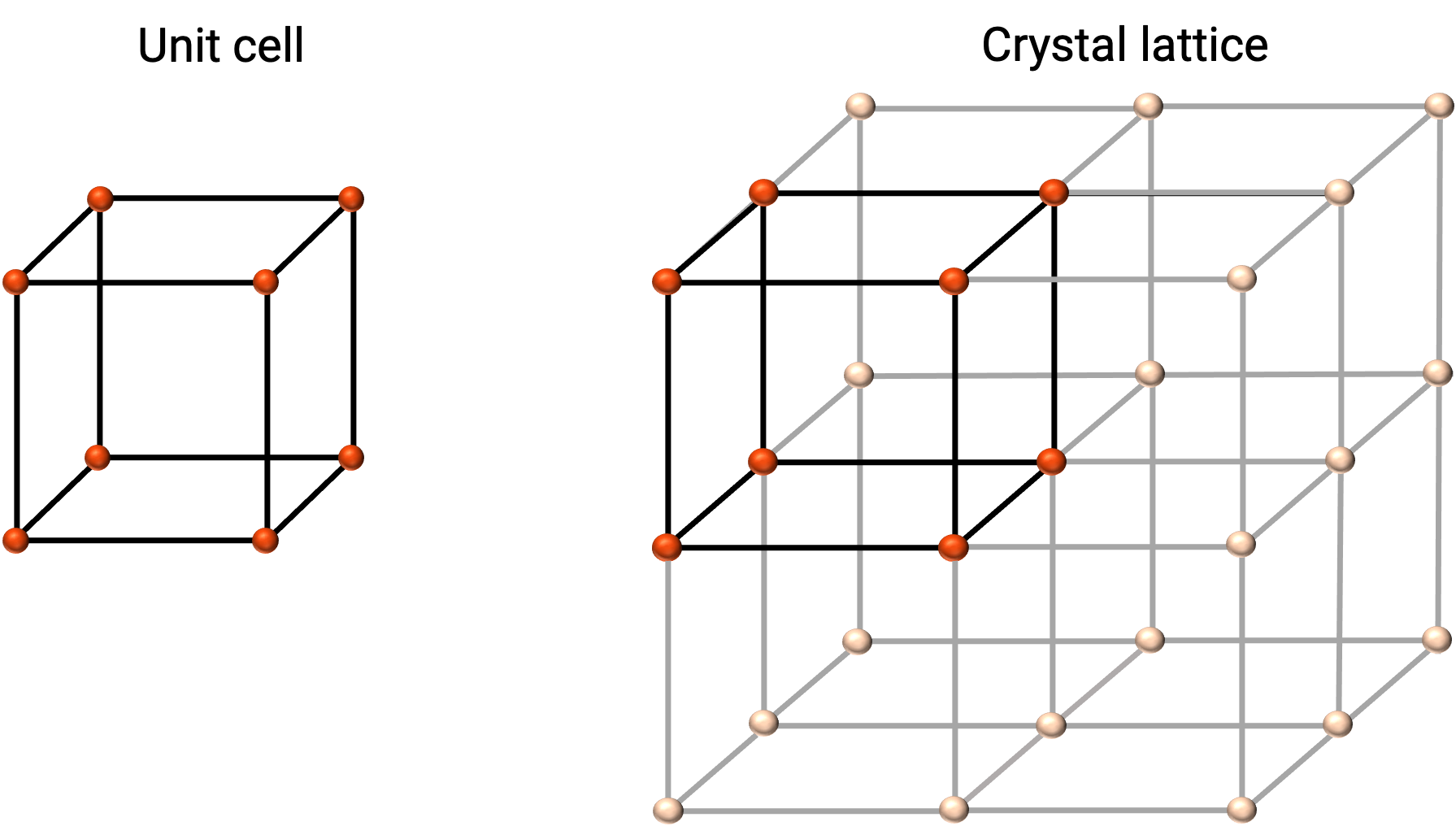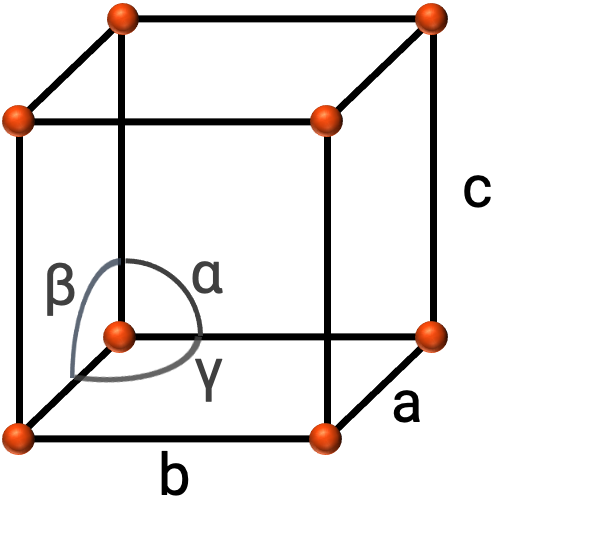11.14 : Structures of Solids
Solids in which the atoms, ions, or molecules are arranged in a definite repeating pattern are known as crystalline solids. Metals and ionic compounds typically form ordered, crystalline solids. A crystalline solid has a precise melting temperature because each atom or molecule of the same type is held in place with the same forces or energy. Amorphous solids or non-crystalline solids (or, sometimes, glasses) which lack an ordered internal structure and are randomly arranged. Substances that consist of large molecules, or a mixture of molecules whose movements are more restricted, often form amorphous solids. Amorphous material undergoes gradual softening, over a range of temperatures, due to the structural non-equivalence of the molecules. When an amorphous material is heated, the weakest intermolecular attractions break first. As the temperature is increased further, the stronger attractions are broken.
Unit Cell
The structure of a crystalline solid is best described by its simplest repeating unit, referred to as its unit cell. The unit cell consists of lattice points that represent the locations of atoms or ions. The entire structure then consists of this unit cell repeating in three dimensions, as illustrated in Figure 1.

Figure 1. Unit cell and crystal lattice with lattice points indicated in red.
In general, a unit cell is defined by the lengths of three axes (a, b, and c) and the angles (α, β, and γ) between them as shown in Figure 2. The axes are defined as being the lengths between points in the space lattice.

Figure 2. Unit cell is defined by its axes (a, b, and c), and angles (α, β, and γ)
There are seven different lattice systems, some of which have more than one type of lattice, for a total of fourteen different unit cells.
| Systems | Angles | Axes |
| Cubic | α = β = γ = 90° | a = b = c |
| Tetragonal | α = β = γ = 90° | a = b ≠ c |
| Orthorhombic | α= β = γ = 90° | a ≠ b ≠ c |
| Monoclinic | α = γ = 90°; β ≠ 90° | a ≠ b ≠ c |
| Triclinic | α ≠ β ≠ γ ≠ 90° | a ≠ b ≠ c |
This text is adapted from Openstax, Chemistry 2e, Section 10.6: Lattice Structures in Crystalline Solids.
Aus Kapitel 11:

Now Playing
11.14 : Structures of Solids
Flüssigkeiten, Feststoffe und zwischenmolekulare Kräfte
13.7K Ansichten

11.1 : Molekularer Vergleich von Gasen, Flüssigkeiten und Feststoffen
Flüssigkeiten, Feststoffe und zwischenmolekulare Kräfte
40.3K Ansichten

11.2 : Intermolekulare vs. intramolekulare Kräfte
Flüssigkeiten, Feststoffe und zwischenmolekulare Kräfte
86.1K Ansichten

11.3 : Intermolekulare Kräfte
Flüssigkeiten, Feststoffe und zwischenmolekulare Kräfte
57.4K Ansichten

11.4 : Vergleich intermolekularer Kräfte: Schmelzpunkt, Siedepunkt und Mischbarkeit
Flüssigkeiten, Feststoffe und zwischenmolekulare Kräfte
43.7K Ansichten

11.5 : Oberflächenspannung, Kapillarwirkung und Viskosität
Flüssigkeiten, Feststoffe und zwischenmolekulare Kräfte
27.4K Ansichten

11.6 : Phasenübergänge
Flüssigkeiten, Feststoffe und zwischenmolekulare Kräfte
18.7K Ansichten

11.7 : Phasenübergänge: Verdampfung und Kondensation
Flüssigkeiten, Feststoffe und zwischenmolekulare Kräfte
17.1K Ansichten

11.8 : Dampfdruck
Flüssigkeiten, Feststoffe und zwischenmolekulare Kräfte
34.1K Ansichten

11.9 : Clausius-Clapeyron-Gleichung
Flüssigkeiten, Feststoffe und zwischenmolekulare Kräfte
55.5K Ansichten

11.10 : Phasenübergänge: Schmelzen und Gefrieren
Flüssigkeiten, Feststoffe und zwischenmolekulare Kräfte
12.2K Ansichten

11.11 : Phasenübergänge: Sublimation und Abscheidung
Flüssigkeiten, Feststoffe und zwischenmolekulare Kräfte
16.7K Ansichten

11.12 : Heiz- und Kühlkurven
Flüssigkeiten, Feststoffe und zwischenmolekulare Kräfte
22.4K Ansichten

11.13 : Phasendiagramme
Flüssigkeiten, Feststoffe und zwischenmolekulare Kräfte
39.3K Ansichten

11.15 : Molekular und ionisch Feststoff
Flüssigkeiten, Feststoffe und zwischenmolekulare Kräfte
16.7K Ansichten
See More
Copyright © 2025 MyJoVE Corporation. Alle Rechte vorbehalten